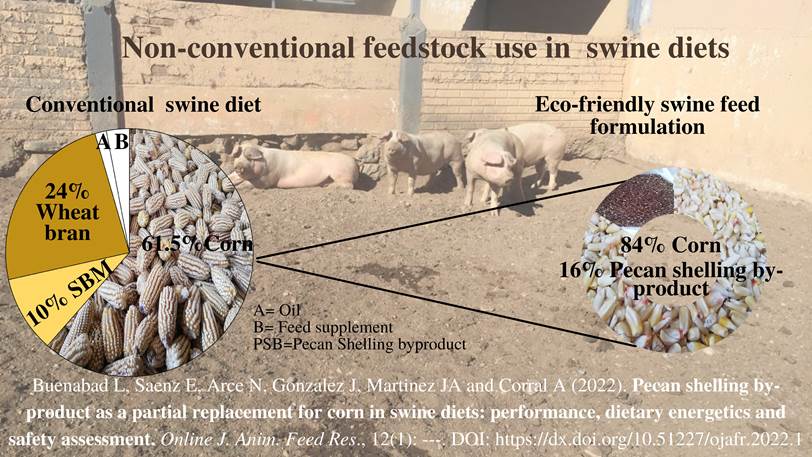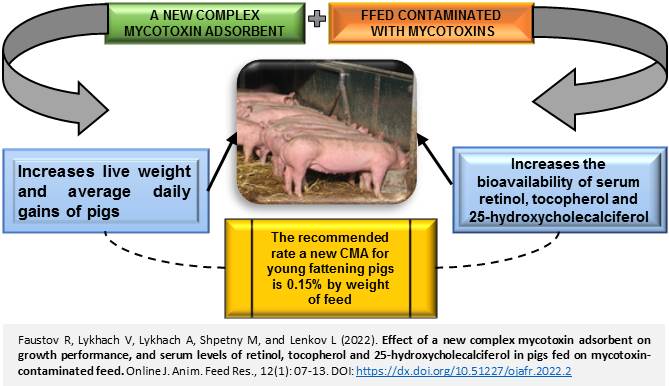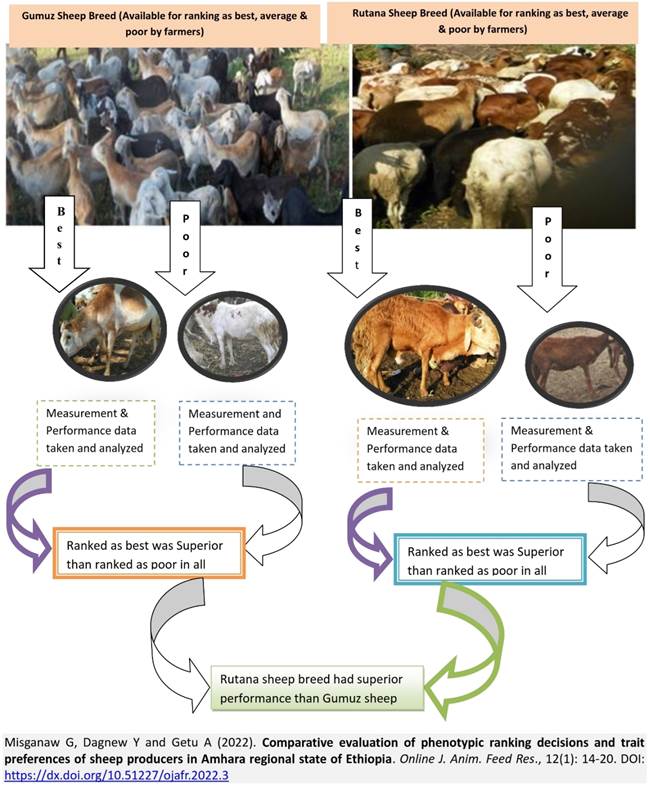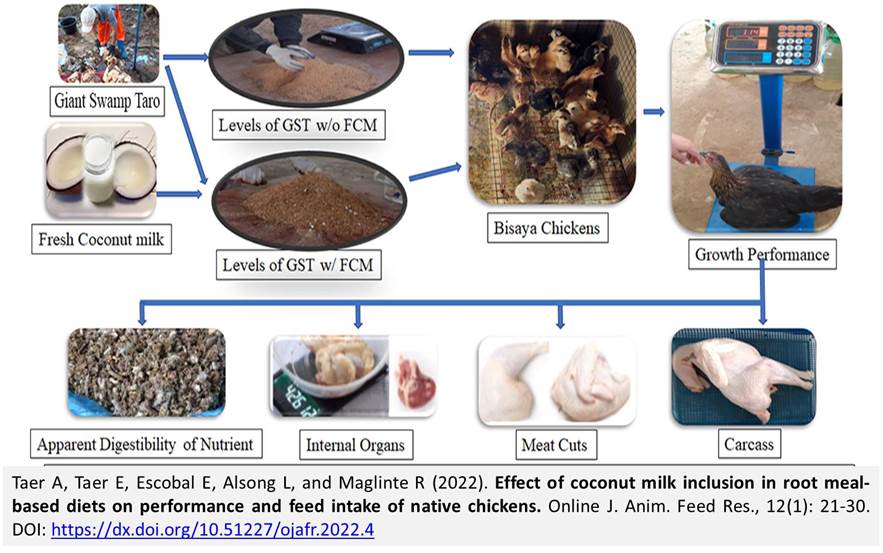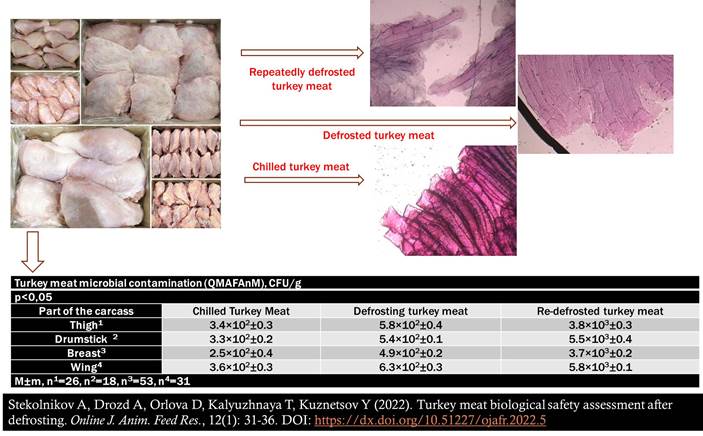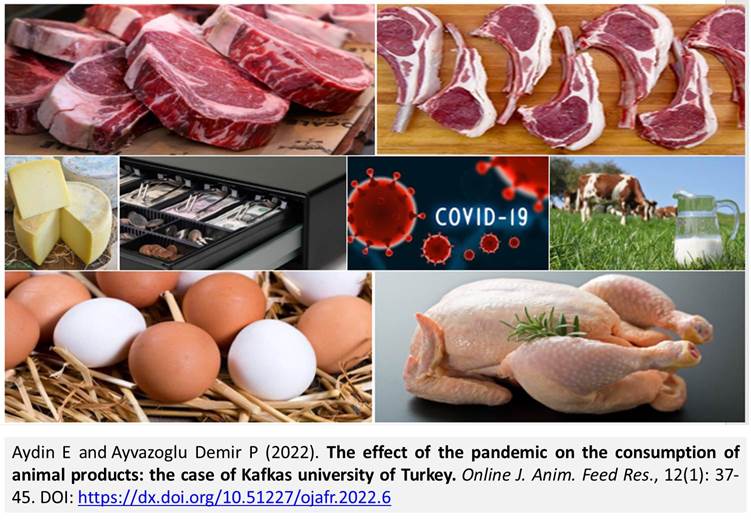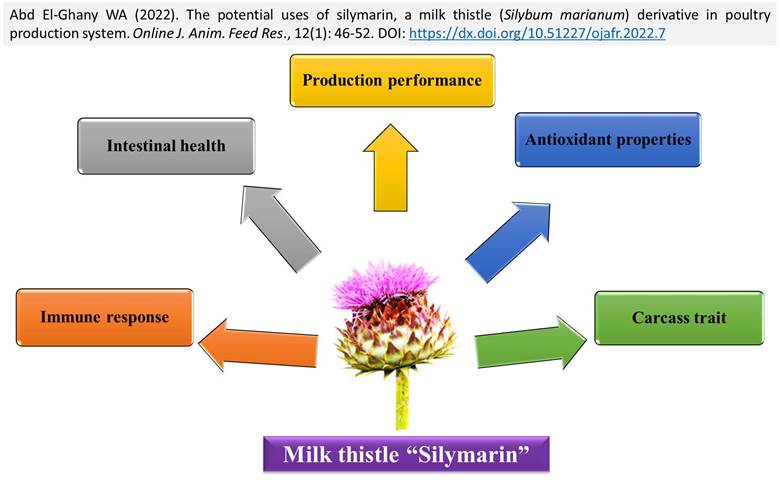Previous issue | Next issue | Archive
![]() Volume 12 (1); January 25, 2022 [Booklet] [EndNote XML for Agris]
Volume 12 (1); January 25, 2022 [Booklet] [EndNote XML for Agris]
Pecan shelling by-product as a partial replacement for corn in swine diets: performance, dietary energetics and safety assessment
Buenabad L, Saenz E, Arce N, Gonzalez J, Martinez JA and Corral A.
Online J. Anim. Feed Res., 12(1): 01-06, 2022; pii: S222877012200001-12
DOI: https://dx.doi.org/10.51227/ojafr.2022.1
Abstract
The objective of the present study was to evaluate the pecan shelling by-product (PSB) grindings as partial replacement for corn in swine diets and its exerting effect on sows’ performance. Seventeen pregnant sows (210 kg of initial body weight) were used in a 14-d trial to evaluate the effect of partial replacement of corn with PSB on performance, dietary energetics, and safety. Treatments consisted of corn-soybean meal-based diet containing 0 or 10% of PSB in the diet, where the later replaced 0 or 16% of corn (as-fed basis). Ether extract (EE) content on PSB averaged 185 g/kg. Treatments including PSB had 1.9 times the EE compared to the treatment with only corn-soybean meal. Replacement of 16% of corn with PSB increased the estimated digestible (DE) and metabolizable energy (ME) values of the diet by 218 and 230 kcal/kg compared to control diet (90% DM basis), respectively. The higher predicted DE or ME intake for sow fed on PSB diet were 500 or 529 kcal/day compared to control diet, respectively; however, no differences on average daily gain (0.52 kg/d) between dietary treatments were observed. Neither was feed refusal for any dietary treatment nor difference on finishing their respective feed allowance. Sows consumed pecan shell at level of 0.75 g/kg of body weight daily, approximately. Intestinal activity was not affected by PSB consumption and fecal score averaged 3.0. Partial replacement of corn with PSB increased the estimated DE and ME for gestating diets by 7%, without influencing performance and intestinal function. The pecan shelling by-product supplementation at 10% inclusion level into a corn-soybean meal-based diet does not affect performance and its addition to the diet contributes to a more sustainable use of locally available feedstock in swine feeding.
Keywords: By-product, Corn-soybean meal, Pecan; Pigs, Sows diet.
[Full text-PDF] [Scopus] [ePub] [Export from ePrint] [Export citation to RIS & EndNote] [How to Cite]
|
|
Effect of a new complex mycotoxin adsorbent on growth performance, and serum levels of retinol, tocopherol and 25-hydroxycholecalciferol in pigs fed on mycotoxin-contaminated feed
Faustov R, Lykhach V, Lykhach A, Shpetny M, and Lenkov L.
Online J. Anim. Feed Res., 12(1): 07-13, 2022; pii: S222877012200002-12
DOI: https://dx.doi.org/10.51227/ojafr.2022.2
Abstract
The objective of the present study was to investigate the effects of commercial analogue mycotoxin adsorbent (CAMA) and Gepasorbex as a new complex mycotoxin-adsorbent additive on growth performance and serum retinol, tocopherol and 25-hydroxycholecalciferol concentrations of fattening young pigs (n=90), which fed on the combined feed contaminated with mycotoxins. Animals were randomly allocated to 3 groups with 30 heads in each: the first group of pigs (control) fed the basic diet in grower and finisher periods; the second group fed the basic diet with the 0.15% by weight of feed of the mycotoxins-adsorbent as commercial analogue; the third group fed the basic diet with the addition of 0.15% by weight of feed of Gepasorbex, a new compound of mycotoxin-adsorbent additive. On the 48th and 88th days of fattening, blood samples were taken from the pigs for testing the vitamins A, E and 25-hydroxycholecalciferol levels. Piglets from third experimental group followed by group 2 animals showed better growth rates and significantly (P<0.001, P<0.01, respectively) exceeded analogues from the control group in live weight and average daily gain in all age periods which showed a noticeable positive effect of diet’s mycotoxin adsorbents, especially Gepasorbex, on animal growth rates. The results of the laboratory study showed that in the pigs from third experimental group, which fed on Gepasorbex with compound feed, the serum concentrations of retinol, tocopherol and 25-hydroxycholecalciferol were within the biological reference interval and significantly exceeded (P<0.05) similar indicators from the control group in both periods. The results of the experiment showed that when animals are subjected to diets contaminated by mycotoxins, use of a new complex action preparation like Gepasorbex can mitigate the negative impacts of mycotoxins on animal performance, and is more capable to remove mycotoxins without binding to dietary vitamins.
Keywords: Gepasorbex, Mycotoxins, Retinol, Tocopherol, 25-hydroxycholecalciferol.
[Full text-PDF] [Scopus] [ePub] [Export from ePrint] [Export citation to RIS & EndNote] [How to Cite]
Comparative evaluation of phenotypic ranking decisions and trait preferences of sheep producers in Amhara regional state of Ethiopia
Misganaw G, Dagnew Y and Getu A.
Online J. Anim. Feed Res., 12(1): 14-20, 2022; pii: S222877012200003-12
DOI: https://dx.doi.org/10.51227/ojafr.2022.3
Abstract
This study was aimed to investigate comparative trait preferences of farmers’ and selection practices for Rutana and Gumuz sheep breeds in existing production system. Ranking method, such as direct and own-flock ranking experiment with sheep keepers were carried in smallholder and large-scale production systems. Appearance, coat colour and fast growth rate were important traits in selecting breeding rams in smallholder system where as fast growth rate, tail length and appearance were preferred in large-scale system. Mothering ability, multiple births and lambing interval were most preferred for ranking breeding ewes in both systems. The mean of all objectively measured body conformation traits and body weight varies significantly across the farmers ranking categories and in line with their selection decision. In Gumuz sheep breed the average body weight of ewes which ranked as best was superior to rank as poor (34.5 kg vs. 26.7kg); whereas, in Rutana breed it was 39.4 kg vs. 29.5 kg (P<0.05). The farmers’ breeding objectives were improving reproduction, conformation and growth traits, which can increase net cash income per flock through increased number of marketable animals for meat production. Therefore, considering meat production traits is recommended as feasible strategy for future for Gumuz and Rutana sheep genetic improvement and conservation program.
Keywords: Breed improvement; Conservation; Gumuz sheep; Ranking experiment; Rutana sheep.
[Full text-PDF] [Scopus] [ePub] [Export from ePrint] [Export citation to RIS & EndNote] [How to Cite]
|
|
Effect of coconut milk inclusion in root meal-based diets on performance and feed intake of native chickens
Taer A, Taer E, Escobal E, Alsong L, and Maglinte R.
Online J. Anim. Feed Res., 12(1): 21-30, 2022; pii: S222877012200004-12
DOI: https://dx.doi.org/10.51227/ojafr.2022.4
Abstract
In pursuit of feed cost reduction for chickens, a reduced feed intake strategy was proposed, but how this strategy works without compromising the chicken performance rarely explored. This study proposes the satiating effects of fresh coconut milk (FCM) as dietary fat for giant swamp taro meal-based (GST) diets on the performance and feed intake reduction of native chickens. One hundred eighty Bisaya native chickens have been grouped into FCM-free and FCM supplemented groups further divided into 0%, 25%, and 50% GST sub-groups of ten chickens in each sub-group. The experiment was laid out in a 2 × 3 factorial in a completely randomized design. The feeding trial started on week 5 post-hatch and terminated on week 12 post-hatch. The average daily feed intake (ADFI) and weight gain (WG) of chicken at weekly intervals were highly significant among FCM as well as GST treatments during weeks 5–7, also the final ADFI and WG. However, no remarkable differences of ADFI and WG in weeks 8–12 feeding. The bodyweight of chickens was highly significant among the FCM group and levels of GST were consistently observed throughout the study period. Neither the FCM nor GST groups differ the values for FCR. However, a bit higher FCR for FCM supplemented and 0% GST treatments. Slaughter weight, meat cuts (breast and thigh) and organ weight (liver, gizzard, and heart) was uninfluenced by either FCM or levels of GST. FCM supplemented diet had higher apparent digestibility of crude ash than FCM-free. 25% GST meal inclusion had higher apparent digestibility of crude fiber compared to 0% and 50% GST. No remarkable FCM×GST interactions in all parameters tested throughout the trial. In conclusion, supplementation of fresh coconut milk to giant swamp taro meal as replacement to maize did not reduce feed intake of chickens but rather increased body weight, weight gain with marginal improvement in FCR. The 50% giant swamp taro replacement to maize compromises overall performance of native chickens. However, supplementing fresh coconut milk to giant swamp taro meal can replace maize up to 25% that gives a better body weight, weight gain, and feed conversion ratio.
Keywords: Bisaya native chicken, Coconut, Dietary fats, Feed efficiency, Root crops.
[Full text-PDF] [Scopus] [ePub] [Export from ePrint] [Export citation to RIS & EndNote] [How to Cite]
|
|
Turkey meat hygiene and biological safety assessment after defrosting
Stekolnikov A, Drozd A, Orlova D, Kalyuzhnaya T, Kuznetsov Y.
Online J. Anim. Feed Res., 12(1): 31-36, 2022; pii: S222877012200005-12
DOI: https://dx.doi.org/10.51227/ojafr.2022.5
Abstract
Violations of temperature and humidity storage conditions and the intensive development of lactic acid putrefactive microorganisms (micrococcus, yeast, and mold fungi) lead to destructive changes in muscle tissue. The studies established the effect of single and repeated defrosting of turkey meat on the increase in the number of microorganisms that cause spoilage of products and being criteria for meat hygiene and biological safety. As a result of the study, there were no detecting bacteria of the genus Salmonella in a sample of 25g of chilled, defrosted, and re-defrosted turkey meat. Also, there was no detecting growth of Listeria monocytogenes and bacteria of the Escherichia coli group in a sample of 1g of the product. On the other hand, significant changes were in the dynamics of microbial contamination in terms of the number of mesophilic aerobic and facultative anaerobic microorganisms. Thus, in cooled samples, the total microbial contamination was 3.2×102±0.2 colonies of forming units per 1g of product. In samples of defrosted turkey meat, this indicator increased 1.8 times and amounted to 5.6×102±0.4. However, the obtained value did not exceed the maximum permissible, regulated in the normative and technical documentation. Samples of re-defrosted turkey meat in terms of quantity of Mesophilic Aerobic and Facultative Anaerobic Microorganisms corresponded to 4.7×103±0.2, which is 14.5 times higher than in chilled meat samples and 8.4 times higher than in defrosted meat. In addition, the established value of the indicator of microbial contamination in re-defrosting meat exceeded the maximum permissible value established by regulatory enactments. Thus, there is a direct effect of repeated freezing of raw meat on its good quality and safety. Therefore, the solution to such a practical problem as identifying the thermal state of turkey meat acquires a significant role.
Keywords: Contamination, Meat hygiene, Meat spoilage, Microbiological control, Storage.
[Full text-PDF] [Scopus] [ePub] [Export from ePrint] [Export citation to RIS & EndNote] [How to Cite]
The effect of the pandemic on the consumption of animal products: the case of Kafkas university of Turkey
Aydin E and Ayvazoglu Demir P.
Online J. Anim. Feed Res., 12(1): 37-45, 2022; pii: S222877012200006-12
DOI: https://dx.doi.org/10.51227/ojafr.2022.6
Abstract
The COVID-19 pandemic has brought about some changes in consumption preferences and nutritional habits as well as lifestyles of individuals, such as education, working system, and social relationships, especially due to having to stay at home. In this study, the change in animal food consumption dispositions of students who had to stay at home during the pandemic and received online education was examined compared to the pre-pandemic period. In the study, since face-to-face teaching-learning activities were suspended, an online questionnaire was used to collect the study data from a total of 380 students registered at Kafkas University. The average monthly income of the participants and the share they allocated to the total food and animal products expenditures in the budget were determined as 539.64±21.00$, 132.73±5.08$, and 62.18±2.67$, respectively. Although the annual chicken meat consumption amount did not change according to the income levels of the students, it was determined that the consumption of animal products, such as beef, mutton-lamb, milk-yogurt, cheese, and eggs increased as the income level increased. During the pandemic period, the food consumption of 55.3% of the participants and the animal products consumption of 35.8% increased. On the other hand, it was determined that the consumption of food and animal products increased as the income level increased during the pandemic compared to the pre-pandemic period. During the pandemic period, it was determined that red meat and salami-sausages consumption of 31.8% of the students decreased by 37.90% and 42.15%, respectively, but that the chicken meat consumption of 31.3% of the students and milk and dairy products consumption of 37.9% increased by 31.02% and 39.17%, respectively. As a result, it was determined that there were significant changes in the nutritional habits of the students during the COVID-19 pandemic, and it was determined that there were significant increases in the consumption of animal products other than red meat. The primary reason why red meat consumption did not increase is thought to be due to the high price of the product compared to consumers’ income levels.
Keywords: Animal Products, Consumption, COVID-19, Meat, Pandemic.
[Full text-PDF] [Scopus] [ePub] [Export from ePrint] [Export citation to RIS & EndNote] [How to Cite]
|
|
The potential uses of silymarin, a milk thistle (Silybum marianum) derivative in poultry production system
Abd El-Ghany WA.
Online J. Anim. Feed Res., 12(1): 46-52, 2022; pii: S222877012200007-12
DOI: https://dx.doi.org/10.51227/ojafr.2022.7
Abstract
Due to recent intensive poultry production, there is a great demand to use natural alternative feed additives. One of these alternatives is phytobiotics. Milk thistle (Silybum marianum) is a plant that has been used for many years as a natural remedy for the liver diseases. Silymarin is the major dried extract of milk thistle. Silymarin has many flavonolignans that showed antioxidant, anti-inflammatory, anti-fibrotic, anti-lipid peroxidative, immune stimulant, and hepatic cells stabilizing effects. In poultry production system, silymarin has been used in broilers as a growth promotor and in layers to improve the egg quantity and quality. It has been also used as a hepatotonic substance as a result of a potent antioxidant activity. The carcass trait showed improvement after treatment of broilers with silymarin. In addition, enhancement of the immune system and the intestinal health has been detected after application of silymarin in poultry diets. Accordingly, this review article aims to show the different potential uses of silymarin in poultry production system regarding its effect on production performance, antioxidant status, carcass traits, immune response, and intestinal health.
Keywords: Antioxidant, Carcass trait, Immunity, Intestinal health, S. marianum
[Full text-PDF] [Scopus] [ePub] [Export from ePrint] [Export citation to RIS & EndNote] [How to Cite]
Previous issue | Next issue | Archive![]()
| < Prev | Next > |
|---|

